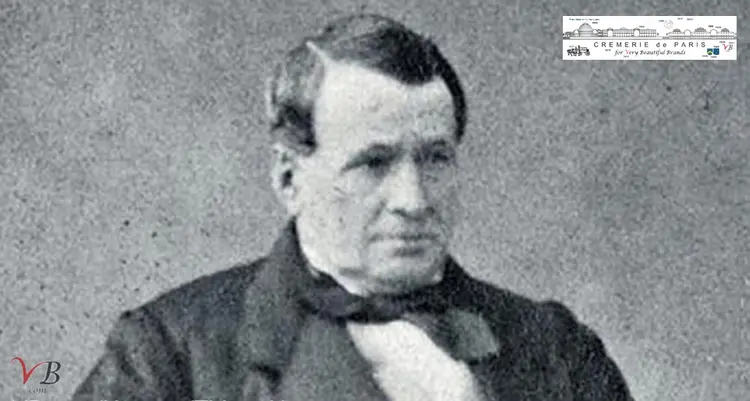The Hermes logo is one of the most recognizable icons in the luxury fashion world. More than just branding, it represents a legacy of craftsmanship, heritage, and quiet prestige. From saddlery workshops to runways and royal wardrobes, Hermès has carried its identity with dignity, with its logo acting as the brand’s symbolic carriage through time.
1. A Logo That Tells a Story

The Hermès logo isn’t flashy. It doesn’t rely on glitter or gimmicks. Instead, it delivers a quiet message: refined tradition, exceptional quality, and cultural prestige. As a brand, Hermès has embraced its equestrian roots and luxury values—and nowhere is that more evident than in its iconic logo.
2. Origins of the Hermès Brand
Hermès was founded in 1837 by Thierry Hermès as a harness and saddle workshop in Paris. His clientele? European aristocracy. Specializing in high-quality leather for horse-drawn carriages, Thierry’s creations were functional and luxurious—qualities that would define the brand forever.
Under the stewardship of his descendants, Hermès gradually transitioned from horse gear to luxury fashion, all while maintaining its artisanal values. Through Charles-Émile, Emile-Maurice, and later Jean-Louis Dumas and Axel Dumas, Hermès expanded into international markets and diversified its product offerings.
3. What Does the Name ‘Hermès’ Mean?
The name comes directly from the founder, Thierry Hermès. When the business was passed on to his sons, it briefly operated under the name Hermès Frères (“Hermès Brothers”), symbolizing its familial essence.
While some may mistakenly associate the name with the Greek god Hermes, the brand’s identity is rooted in family tradition, not mythology. That said, the name has become synonymous with exclusivity, authenticity, and elegance.
4. Expansion of Products & Global Growth

Hermès started out with saddles and bridles, but it didn’t stay in the stable. As lifestyles changed, so did Hermès. The brand carefully expanded into new areas while staying true to its craftsmanship.
In 1922, Hermès introduced its first handbag—because Emile-Maurice Hermès’s wife couldn’t find one she liked. That same spirit of solving real-world luxury needs led to more innovations: men’s clothing in 1925, silk scarves in 1937, and the first perfume in 1951.
By the 1980s, Hermès was becoming a household name worldwide, especially with the rise of the Birkin and Kelly bags. These weren’t just accessories—they became cultural icons.
Then in 2001, Hermès took another bold step: launching an online store. At a time when most luxury brands were hesitant to sell online, Hermès leaned into the future—without losing its roots.
This section tells us how Hermès grew wisely, always balancing tradition with innovation.
5. The Creation of the Hermès Logo
The Hermès logo was officially introduced in 1950. Its design was inspired by the painting “Le Duc Attelé, Groom à l’Attente” by Alfred de Dreux. The image—a horse-drawn carriage with a standing groom—reflects the brand’s equestrian origins.
Unlike modern logos that often chase trends, the Hermès logo was a deliberate nod to the past. It connects the brand’s early days in saddle-making with its present as a purveyor of timeless luxury.
6. Logo Meaning & Symbolism
The Hermès logo isn’t just a picture—it’s a message.
At the center is a horse-drawn carriage with a groom standing by. It’s a respectful nod to Hermès’ origins in crafting saddles and harnesses for 19th-century nobility. But the symbolism goes deeper:
- The horse represents strength, tradition, and timeless grace.
- The carriage speaks to elegance, patience, and a slower, more refined way of living.
- The groom hints at attentive service and the human touch behind every product.
Together, they reflect what Hermès stands for: intentional luxury rooted in heritage.
Even the typography reinforces this—“HERMÈS” in bold, classic serif font (with “PARIS” underneath) reminds us this is a brand steeped in French refinement and global prestige.
7. Iconic Packaging: The Orange Box
Originally, Hermès products were packaged in ivory and gold boxes. But during World War II, materials became scarce. The brand switched to orange packaging out of necessity—a decision that unintentionally created a new icon.
Today, the bright orange box with the black Hermès logo is nearly as recognizable as the products inside.
8. Logo Evolution and Refinements
While the Hermès logo has largely remained consistent, minor refinements have occurred, particularly in the 1970s when it was slightly modernized for clarity and balance. Despite tweaks, the logo’s integrity has always been preserved—a testament to its original strength.
9. A Global Status Symbol
The Hermès logo is instantly associated with wealth, style, and exclusivity. Whether on a Birkin bag, a silk scarf, or a storefront, the logo is an unspoken declaration of refined taste.
It has also made its way into pop culture, with appearances in television, music, and celebrity wardrobes. Grace Kelly popularized the Kelly bag, Jane Birkin inspired the Birkin, and icons like Drake and Jay-Z have paid tribute to the brand.
10. Fun Facts About Hermès
Hermès is known for being elegant and exclusive—but it’s also full of fascinating details that most people don’t know. Here are a few:
- One scarf = 300 silkworms
Creating a single Hermès silk scarf requires silk from over 300 silkworms, showing the brand’s dedication to quality from the very beginning of the process. - The Birkin bag takes 40+ hours to make
Each bag is handcrafted by one artisan, taking nearly a full week. It’s not just a bag—it’s a wearable piece of art. - Online before it was cool
In 2001, Hermès became one of the first luxury fashion houses to sell products online, proving that it could embrace innovation without losing its soul. - Jane Birkin’s ethical stand
In 2015, Jane Birkin raised concerns about the use of crocodile leather, prompting Hermès to work with PETA and increase transparency in their sourcing.
These little facts highlight what makes Hermès so special: craftsmanship, consciousness, and a fearless approach to doing things differently.
The Hermes logo isn’t just about brand recognition—it’s about identity, values, and legacy.
It perfectly captures what Hermès stands for: heritage, craftsmanship, and quiet luxury. While other brands chase trends, Hermès stays true to its roots, reminding us that real luxury isn’t loud—it’s timeless.
Whether it’s printed on a silk scarf or embossed on a Birkin bag, the logo continues to symbolize elegance that never goes out of style.
11. FAQs
Q: Is Hermès the most luxurious brand in the world?
A: Many would say yes. Its dedication to craftsmanship, scarcity, and brand heritage set it apart.
Q: Why are Hermès bags so rare?
A: Each bag is handmade by a single artisan, with limited production and immense demand.
Q: How do you pronounce “Hermès”?
A: It’s pronounced “air-mez” with a soft “H” and an audible “s.”
